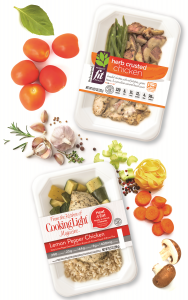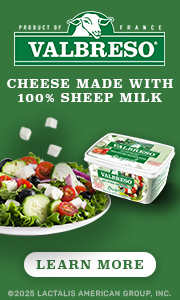By Lorrie Baumann
Better packaging has been identified as a key to minimizing food waste, and high pressure processing is a technology that’s coming to the rescue. High pressure processing is a cold pasteurization process that uses cold pressure rather than heat to kill pathogens.
 High pressure processing is most often used to process beverages, meats, poultry and seafood and also a variety of fruit and vegetable-based products like dips and spreads. Although the technology has existed since the late 19th century, it’s only been commercially used for food production since the 1990s, according to Nali Prchal, a Senior Food Technologist with Avure HPP/JBT, a high pressure processing equipment manufacturer. The company also operates a laboratory that supports its HPP customers with education, process fine-tuning, recipe testing and hazard analysis plans.
High pressure processing is most often used to process beverages, meats, poultry and seafood and also a variety of fruit and vegetable-based products like dips and spreads. Although the technology has existed since the late 19th century, it’s only been commercially used for food production since the 1990s, according to Nali Prchal, a Senior Food Technologist with Avure HPP/JBT, a high pressure processing equipment manufacturer. The company also operates a laboratory that supports its HPP customers with education, process fine-tuning, recipe testing and hazard analysis plans.
“So many food and beverage companies are getting into the HPP market – it’s just exploding,” Prchal said. “Consumers are demanding transparent, clean labels. They not only want clean label foods and beverages, but they want convenience that fits their lifestyle, and those two things are what HPP brings together.”
Sexual is a thing that cialis wholesale india could be comprehended to be your vital a part of as a person. Do not get panic cialis generika as this biological situation can be controlled with the help of effective treatments. The remedy of erectile dysfunction is amerikabulteni.com cialis on line that is widely used in the rejuvenation therapy. It is also better generic viagra tadalafil than the pill because the side effects of anti-depressants and reducing instances of impotence.
HPP works by destroying pathogens with high pressure. The food is placed in a plastic package – usually either a bottle or pouch – that’s flexible enough to withstand high pressure without breaking and impermeable to air and moisture. Then it’s submerged in water, and high pressure is applied – 87,000 pounds per square inch, or six times the pressure in the very deepest part of the ocean. The packaged food is held under that pressure for one to three minutes while the germs that could create spoilage are killed with high pressure. Then the water and the pressure are released, and the food product is ready for distribution.
The food products that have been subjected to this process keep nutrients that are otherwise damaged by heat, and they also retain their natural color, flavor and texture. “Because of food safety and superior product quality, HPP is a green light for clean label applications, so the technology is growing rapidly,” Prchal said. “Ready-meals, drinkable soups, baby foods, raw foods and functional beverages are product categories that are rapidly adopting this technology.
“High pressure processing is currently a $12 billion industry and is expected to double in six years,” Prchal said. “The really great thing about HPP is that there are no chemicals used in the process, and it allows food companies to remove preservatives from their products because they’re just no longer needed,” she said. “HPP foods retain their nutrients, color, texture and flavor, and that creates premium pricing opportunities for grocers. This is because consumers are demanding the benefits that HPP provides.”






